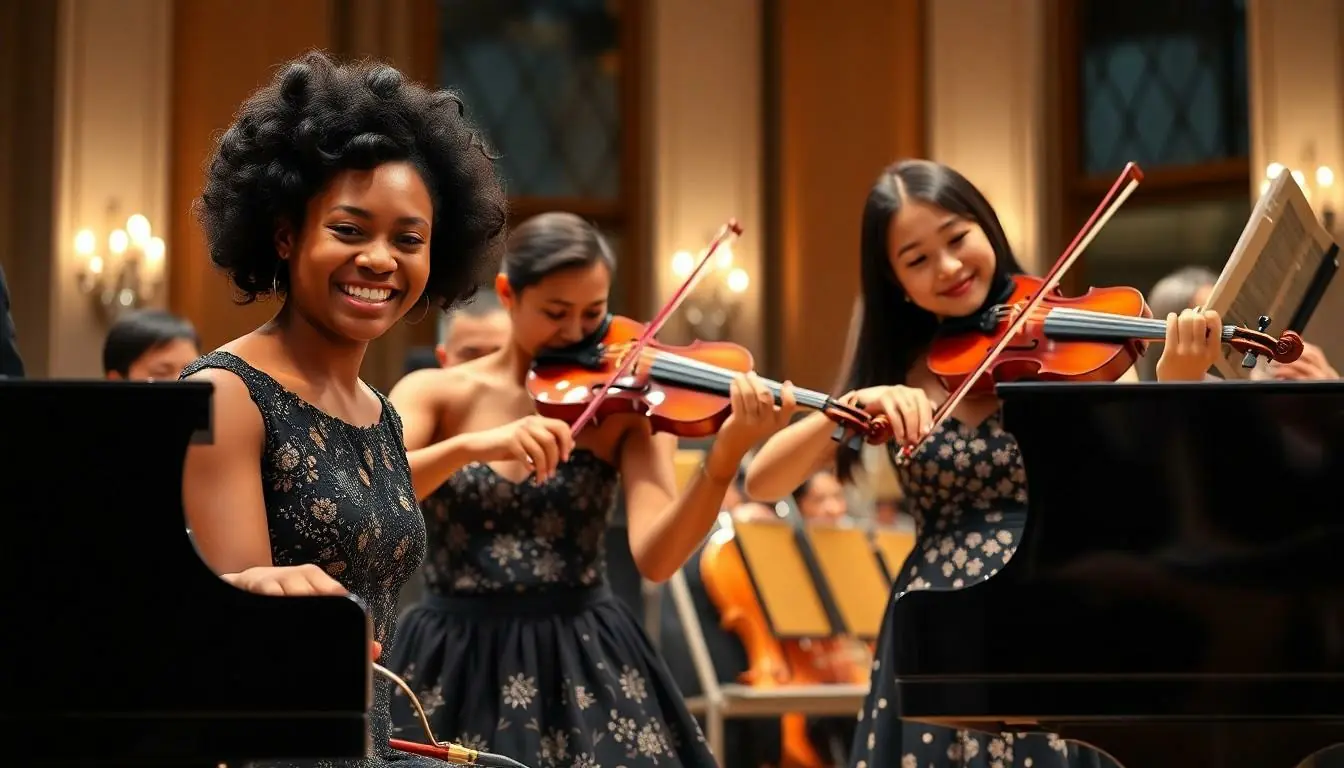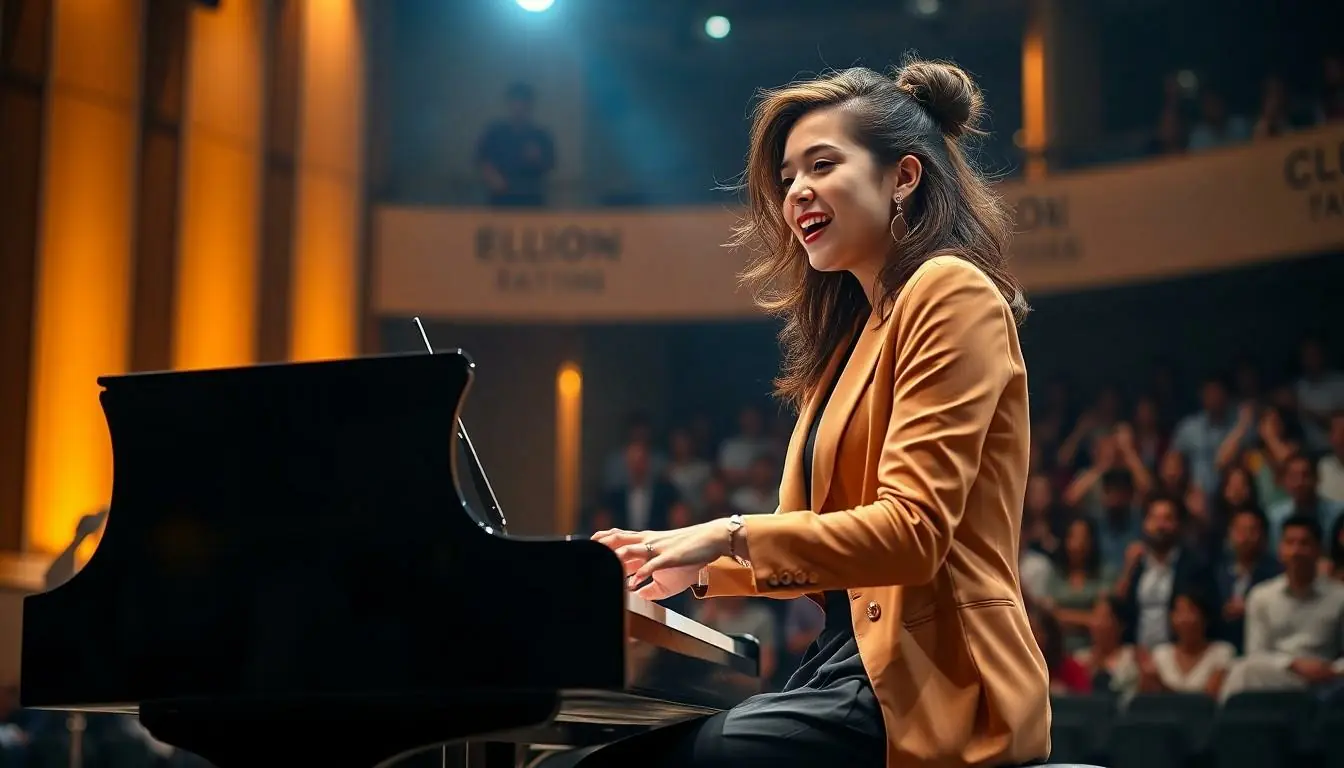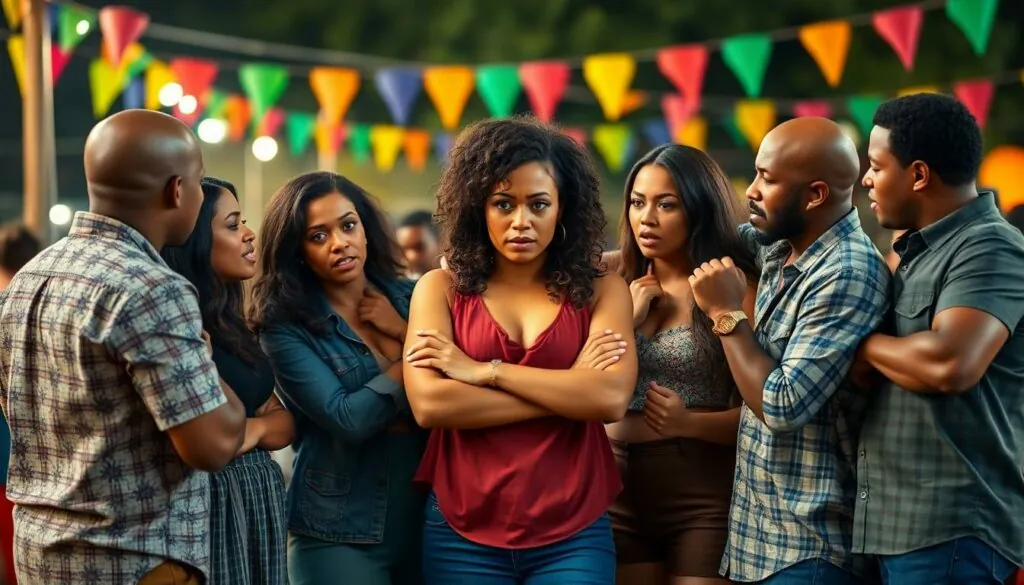In a world dominated by pop hits and viral TikTok dances, classical music artists are quietly making waves and redefining the genre. Forget the stereotype of stuffy concert halls and bow ties; today’s classical musicians are as dynamic as they are talented. They’re blending tradition with innovation, creating fresh sounds that even your favorite DJ would envy.
Imagine a cellist rocking out in a hoodie while effortlessly performing a Bach suite. Or a conductor who can turn a symphony into a thrilling experience that rivals a blockbuster movie. These artists are not just keeping classical music alive; they’re giving it a much-needed makeover. So, if you think classical music is just for the elite or the overly serious, think again. It’s time to tune in and discover how these modern maestros are captivating audiences worldwide.
Table of Contents
ToggleOverview Of Classical Music Artists Today
Contemporary classical music artists redefine the genre through innovative interpretations and collaborations. Using a variety of influences, these musicians create unique sounds that appeal to diverse audiences. Performers like Yuja Wang and Lang Lang infuse energy into performances, breaking traditional norms.
Many classical artists now embrace technology, utilizing social media platforms to reach broader audiences. By sharing performance snippets, behind-the-scenes content, and engaging with fans, they cultivate a loyal following. Public interest in classical music has surged thanks to initiatives like Classical 2.0, which emphasizes accessibility and modern relevance.
Notable composers continue to emerge within the classical music scene. Names like Anna Clyne and Nico Muhly contribute fresh narratives, expanding the genre’s horizons. Their works often reflect contemporary issues, addressing social, political, and environmental themes, making classical music resonate with today’s listeners.
Collaborations across genres enrich the classical music landscape. Artists frequently partner with jazz musicians, electronic producers, and even pop stars. This blending of styles fosters creativity and introduces classical music to new demographics.
Live performances also adapt to modern expectations. Many venues now incorporate multimedia elements, enhancing the experience for attendees. Engaging programming and interactive formats draw in younger audiences, furthering the reach and impact of classical music.
Overall, the classical music community thrives as it continuously evolves. Engaging artists, innovative technologies, and diverse influences reshape how audiences perceive and experience the genre. Traditional boundaries blur, ensuring classical music remains vibrant and relevant in today’s cultural landscape.
Emerging Classical Music Artists

The contemporary classical music scene boasts numerous emerging talents. These artists push boundaries while staying true to the genre’s roots.
Influential Newcomers
Eager newcomers, such as Isata Kanneh-Mason and Olivia Chen, gain recognition for their exceptional skills and fresh perspectives. Their performances captivate audiences and showcase their musical versatility. Kanneh-Mason, a noted pianist, reinterprets classical pieces with vibrant energy. Chen, a talented violinist, brings unique interpretations that resonate widely. Each artist draws inspiration from diverse backgrounds, enriching the classical repertoire and introducing innovative ideas. As their popularity grows, they inspire a new generation to explore classical music.
Genre-Bending Innovators
Genre-bending innovators like Max Richter and Caroline Shaw redefine classical music’s boundaries. Richter combines classical compositions with electronic elements, forging a distinctive sound. Shaw blends contemporary vocal techniques with traditional instrumentation, creating engaging pieces. These artists collaborate across genres, linking classical music with pop, rock and even hip-hop. Their innovative approaches attract a diverse audience, proving that classical music can evolve beyond conventional limits. Engaging with various art forms, they breathe new life into the genre. Each performance reflects their commitment to challenging norms and offering fresh experiences.
Established Classical Music Artists
Established classical music artists are making significant impacts today. They blend traditional techniques with modern influences, continuing to attract diverse audiences.
Icons Redefining Their Art
Yuja Wang captivates listeners with her dynamic performances, showcasing technical brilliance and emotional depth. Lang Lang, known for his theatrical interpretations, pushes the boundaries of piano music. Both artists exemplify how established musicians can evolve, illustrating that classical music remains vibrant and engaging. Their interpretations often challenge traditional norms, drawing in younger audiences while retaining classical music’s essence.
Collaborations and Cross-Genre Projects
Collaborations between classical artists and musicians from other genres thrive today. Max Richter, for instance, merges classical compositions with electronic music, creating unique soundscapes. Caroline Shaw blends classical training with contemporary vocal techniques, appealing to a broader demographic. These partnerships expose classical music to varied fans, proving its adaptability. Such cross-genre projects encourage innovation and reinvigorate classic repertoires, enhancing their relevance in today’s music scene.
Impact Of Technology On Classical Music
Technology significantly influences classical music, enhancing its reach and engagement. Digital platforms play a crucial role in making music accessible to wider audiences.
Digital Platforms and Accessibility
Streaming services and online concert platforms broaden audience engagement with classical music. Major platforms like Spotify and Apple Music host curated playlists and feature contemporary classical artists, introducing them to millions. Concerts streamed on services such as YouTube and Facebook Live allow fans to enjoy performances from their homes. These digital avenues help dismantle barriers to entry, allowing anyone with internet access to experience live classical music events. Innovations in virtual reality also create immersive experiences, enriching the way audiences interact with performances.
Social Media Presence
Artists leverage social media to connect directly with fans, building communities around their music. Platforms like Instagram and TikTok enable performers to share snippets of their practice sessions and live performances, making classical music more relatable. Engaging content varies from behind-the-scenes footage to educational posts about compositions and techniques. These interactions foster a sense of intimacy, replacing traditional perceptions of classical music’s exclusivity with an approachable atmosphere. Hashtags like #ClassicalMusic and #NewMusic encourage the discovery of emerging artists and compositions, further diversifying the landscape.
The world of classical music is thriving with fresh energy and innovation. Today’s artists are breaking down barriers and inviting a wider audience to appreciate the genre. Their ability to blend tradition with modern influences creates a dynamic listening experience that resonates with diverse demographics.
Emerging talents and established musicians alike are redefining what classical music can be. Through collaborations and the use of technology they are making classical music more accessible and engaging than ever before. The future looks bright as these artists continue to inspire and captivate, ensuring that classical music remains a vital part of our cultural landscape.


